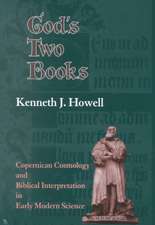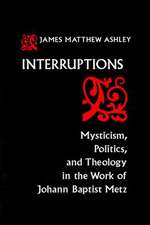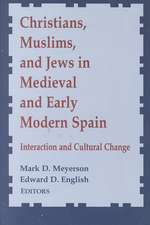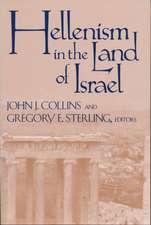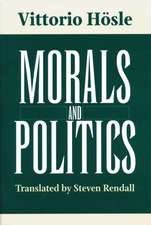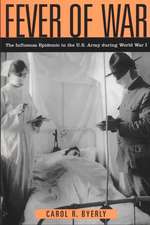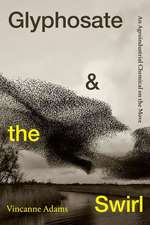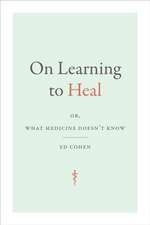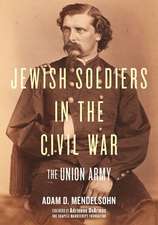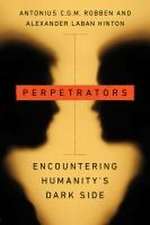Dance Teaching Methods and Curriculum Design – Comprehensive K–12 Dance Education
Autor Gayle Kassing, Danielle Jay–kirschenbauen Limba Engleză Paperback – 22 oct 2020
Dance Teaching Methods and Curriculum Design offers much new material:
- Four new sample dance units (up from 10 in the previous edition)
- Many useful instructor ancillaries, including an instructor guide, a presentation package, and a test package; students can submit their work electronically, and quizzes are automatically graded
- A web study guide offering a variety of projects, printable forms, and video clips that demonstrate selected steps, movements, exercises, and combinations of different dance forms
- Beyond Technique assignments, which have been field tested in university courses, to help students see firsthand what a dance teacher does
Another great feature of the book is the dance portfolio that students will create as they work through the text. This portfolio will help them demonstrate their ability to create lesson plans, a unit plan, and a complete dance curriculum. The students will develop these abilities as they complete chapters 1 through 13. Chapter 14 then walks students through assembling the sections of the portfolio. Chapter 14 of the web study guide includes projects the student can complete to include within their portfolio. Step-by-Step Approach
Dance Teaching Methods and Curriculum Design offers students a step-by-step course of study for how to teach dance and create sustainable dance programs in schools. The authors synthesize a wide variety of research and resources to support dance pedagogy and curriculum development, provide the infrastructure to meet the changing needs of students to teach dance in the 21st century, and supply extensive references for students to use to increase their dance education knowledge. Book Organization
The text is organized into three parts. Part I covers information specific to teaching dance and understanding learners from grades preK through 12. Part II focuses on applying the dance knowledge gained from part I to the teaching and learning process in the four categories of dance forms. In part III, students learn how to develop unit plans and choose a curriculum design for their dance programs. Filling a Void
Dance Teaching Methods and Curriculum Design, Second Edition, addresses the knowledge, skills, processes, and content that students need as they prepare to teach dance in various settings. This text fills a void in dance education literature, studying all the steps as it provides students the foundational knowledge and practical know-how they need to confidently begin teaching dance in schools, recreation programs, or private dance studios.
Preț: 614.17 lei
Preț vechi: 797.62 lei
-23% Nou
117.52€ • 122.70$ • 97.26£
Carte disponibilă
Livrare economică 15-29 martie
Livrare express 01-07 martie pentru 62.36 lei
Specificații
ISBN-10: 149257239X
Pagini: 528
Dimensiuni: 218 x 281 x 31 mm
Greutate: 1.43 kg
Ediția:2 ed
Editura: MG – Human Kinetics
Descriere
Note: The web study guide is included with all new print books and some ebooks. For ebook formats that don't provide access, the web study guide is available separately.
This new edition of Dance Teaching Methods and Curriculum Design is ideal for preparing undergraduate students to teach dance education. Students will learn a conceptual and comprehensive model of dance education that embraces dance as an art form and a lifelong physical activity. Students will gain the tools they need to teach various dance forms, create effective lesson and unit plans, and develop a curriculum that meets arts and education standards.
The second edition of this foundational text uses a holistic approach to dance pedagogy for teaching children through adults in school and community environments. It also introduces theories from multiple disciplines and helps students apply those theories and processes when creating lesson and unit plans.
New Material
Dance Teaching Methods and Curriculum Design offers much new material:
- Four new sample dance units (up from 10 in the previous edition)
- Many useful instructor ancillaries, including an instructor guide, a presentation package, and a test package; students can submit their work electronically, and quizzes are automatically graded
- A web study guide offering a variety of projects, printable forms, and video clips that demonstrate selected steps, movements, exercises, and combinations of different dance forms
- Beyond Technique assignments, which have been field tested in university courses, to help students see firsthand what a dance teacher does
The sample dance units offer a comprehensive guide for teaching popular dance forms, and they now cover a greater diversity of styles, including hip-hop, Mexican folkloric, African, and line dance. In addition, the new ancillaries offer scope and sequence plans and block time plans for all 14 dance units, as well as all printable forms from the book.
Dance Portfolio
Another great feature of the book is the dance portfolio that students will create as they work through the text. This portfolio will help them demonstrate their ability to create lesson plans, a unit plan, and a complete dance curriculum. The students will develop these abilities as they complete chapters 1 through 13. Chapter 14 then walks students through assembling the sections of the portfolio. Chapter 14 of the web study guide includes projects the student can complete to include within their portfolio.
Step-by-Step Approach
Dance Teaching Methods and Curriculum Design offers students a step-by-step course of study for how to teach dance and create sustainable dance programs in schools. The authors synthesize a wide variety of research and resources to support dance pedagogy and curriculum development, provide the infrastructure to meet the changing needs of students to teach dance in the 21st century, and supply extensive references for students to use to increase their dance education knowledge.
Book Organization
The text is organized into three parts. Part I covers information specific to teaching dance and understanding learners from grades preK through 12. Part II focuses on applying the dance knowledge gained from part I to the teaching and learning process in the four categories of dance forms. In part III, students learn how to develop unit plans and choose a curriculum design for their dance programs.
Filling a Void
Dance Teaching Methods and Curriculum Design, Second Edition, addresses the knowledge, skills, processes, and content that students need as they prepare to teach dance in various settings. This text fills a void in dance education literature, studying all the steps as it provides students the foundational knowledge and practical know-how they need to confidently begin teaching dance in schools, recreation programs, or private dance studios.
Cuprins
Chapter 1. Envisioning Dance Education
Defining Dance and Dance Education
Distinguishing Between Dancers and Dance Educators
Teaching Dance in the 21st Century
Relating Standards for Dance to Dance Education
Understanding the Teaching and Learning Process Model in Dance
Summary
Application Activities
Chapter 2. Teaching Dance From a Holistic Perspective
Comprehensive Dance Knowledge Model
Supportive Knowledge
Dance Training, Conditioning, and Wellness
Technique and Choreography
Education Theories for Teaching Dance
Artistic Development
Summary
Application Activities
Chapter 3. Observing and Analyzing the Teaching and Learning Situation
Understanding Observation Techniques in the Dance Class
Applying Kinesiology Observation to Dance
Developing Observation Skills
Summary
Application Activities
Chapter 4. Guiding Students in Learning Dance
Three Styles of Student Learning
Three Stages of Motor Learning
Movement–Language Connection in Dance
Constructing the Dance Class
Summary
Application Activities
Chapter 5. Understanding Dance Teaching Methods
Choosing a Presentational Method
Teaching Strategies for the Dance Class
Teaching Methods for Specific Dance Forms
Understanding Music and Accompaniment in the Dance Class
Summary
Application Activities
Chapter 6. Organizing and Managing the Dance Class
Creating a Positive Learning Atmosphere
Managing the Dance Classroom
Dealing With Student Behaviors in the Dance Classroom
Developing a Philosophy of Teaching Dance
Summary
Application Activities
Chapter 7. Analyzing the Learner and the Learning Environment
Understanding Characteristics of Different Learners
Developing Social and Emotional Behaviors in the Dance Class
Understanding Dance and the Dance Teacher in K-12 Education
Characterizing the Community
Identifying Values in the Community
Summary
Application Activities
Chapter 8. Categorizing Dance Forms and Their Artistic Demands
Gathering Content Information to Teach Dance
Identifying Characteristics of Dance Forms
Understanding the Format of the Dance Class
Dance and Other Disciplines
Utilizing Principles of the Dance Form
Teaching Artistic Development
Summary
Application Activities
Part II. Lesson Plans
Chapter 9. Developing the Lesson Plan
Setting Up Effective Dance Learning Experiences
Describing the Lesson Plan
Relating Objectives or Outcomes to a Learning Taxonomy
Summary
Application Activities
Chapter 10. Selecting Appropriate Assessment Strategies for Dance
Using Assessment Techniques in the Dance Class
Grading Students’ Work
Summary
Application Activities
Chapter 11. Writing and Delivering the Lesson Plan
Writing the Lesson Plan
Teaching the Lesson
Exploring Other Options
Summary
Application Activities
Part III. Curriculum Plans
Chapter 12. Creating a Curriculum
Surveying Options for Discipline-Based Dance Curriculum Models
Starting the Instructional Design Process
Writing a Dance Curriculum
Formally Evaluating Dance Curricula and Programs
Summary
Application Activities
Chapter 13. Sample Units for Dance Forms
Overview of Dance Forms
Teaching Overview
Content Overview
Unit 13.1: Creative Movement and Creative Dance
Unit 13.2: Folk Dance
Unit 13.3: Cultural Dances of Africa
Unit 13.4: Mexican Folkloric Dance
Unit 13.5: Square Dance
Unit 13.6: Contra Dance
Unit 13.7: Line Dance
Unit 13.8: Social Dance
Unit 13.9: Ballet
Unit 13.10: Modern Dance
Unit 13.11: Jazz Dance
Unit 13.12: Tap Dance
Unit 13.13: Hip-Hop Dance
Unit 13.14: Dance Fitness
Chapter 14. Culminating Curriculum Portfolio
Depicting the Teaching Environment
Describing the Learner
Selecting Dance Content for Each Unit Plan
Devising Learning Experiences for the Dance Form
Writing the Lesson Plans
Appendix
Notă biografică
Kassing, who has been an acquisitions editor at Human Kinetics, has presented at state, national, and international conferences and has worked as a dance consultant providing dance professional development workshops for K-12 and university dance educators. In 2010, she was named the National Dance Association Scholar/Artist, and in 2016 she was designated as the 2016-2017 National Dance Society Scholar.
Danielle Jay Kirschenbaum was a professor of dance education at Northern Illinois University. A student of ballet since the age of three, she has studied with Margaret Craske and Celene Keller at Jacob's Pillow; with David McLain, David Blackburn, and Oleg Sabline at the University of Cincinnati; and with Grace Thomas, a soloist with the Radio City Ballet. Kirschenbaum lives in Sycamore, Illinois. Her favorite leisure-time activities include spending time with her relatives and close friends, reading, and choreographing.

